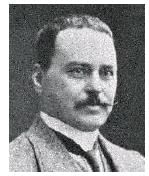Olympiad Test Level 2: Technological Developments and Inventions- 1 - Class 7 MCQ
10 Questions MCQ Test GK Olympiad for Class 7 - Olympiad Test Level 2: Technological Developments and Inventions- 1
What is the name of the Indian origin scientist who has developed the world’s first wireless pacemaker?
What is the name of the world’s lightest material developed by ISRO scientists?
Many transplanted seedlings do not grow because
Who discover ed an tiseptic surgery?
Which device is used to listen the vibrations of the heart and lungs?
The system for writing by blind people was invented by
Who discovered the link between electricity and magnetism?
'X' metal is soft and can be easily cut with a knife. It catches fire when exposed to air and water and is also used in street lights. What is 'X'?
Some of the inventions and t heir inven tors are given below. Select the mismatched pairs.
(i) Atomic bomb – J. Robert Oppenheimer
(ii) Pian o – Georges Audemars
(iii) Steel – Henry Bessemer
(iv) Cinema – Bartolomeo Cristofori
His discovery of the material parasite in the gastrointestinal tract of the Anopheles mosquito led to the realisation that malaria was transmitted by Anopheles. He received the Nobel Prize for Physiology or Medicine in 1902 for his work on the transmission of malaria. Who was he?

|
7 docs|68 tests
|




















